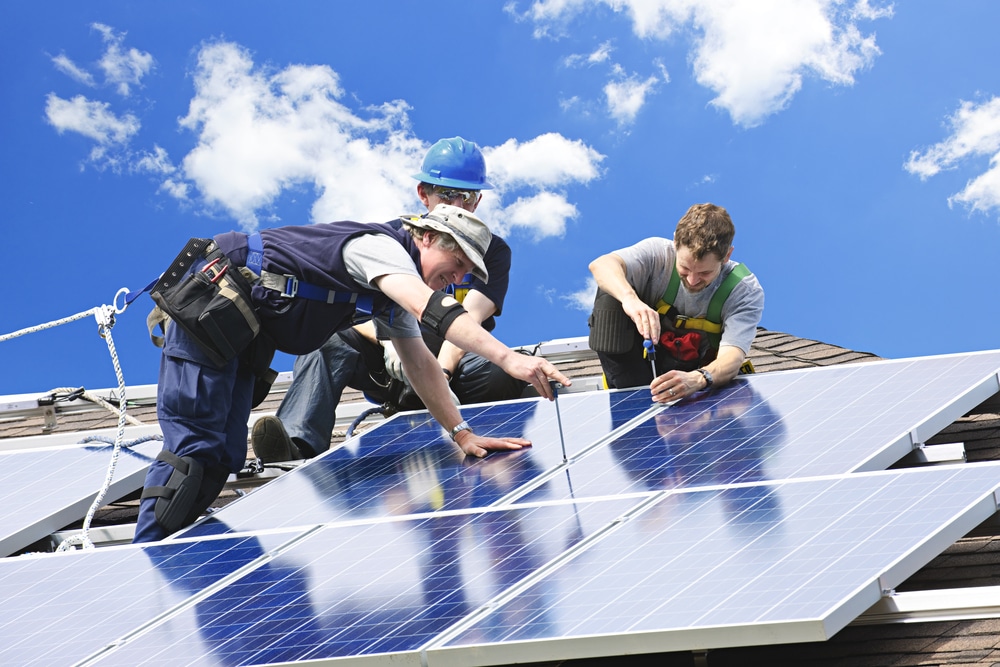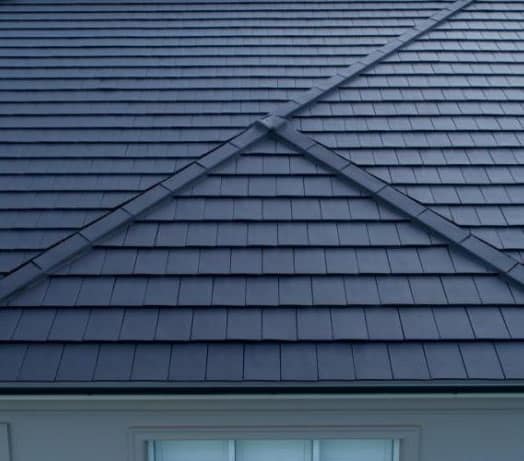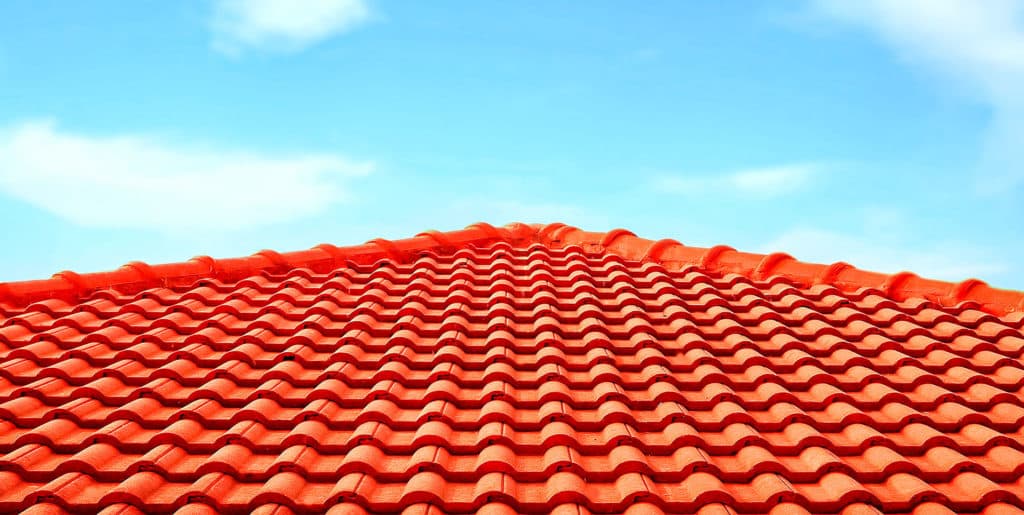Mesa is a city located in the state of Arizona that has experienced significant residential and commercial growth over the past two decades. As such, roofing materials used in Mesa must be able to withstand extreme temperatures and high winds as well as meet aesthetic requirements for both homeowners and businesses. This article will examine the most common roofing materials used in Mesa, their pros and cons, and what factors should be taken into consideration when selecting a material for a particular project.
The variety of roofing options available to contractors today can make choosing the right one overwhelming. To simplify this process, it is important to understand which types of roofing are typically found on homes or buildings within Mesa’s limits. Commonly used roofing materials include asphalt shingle roofs, clay tile roofs, metal roofs, rubber membrane roofs, concrete tile roofs, slate roofs, and wood shake roofs. Each type has its own advantages and disadvantages depending on climate conditions and other factors.
Asphalt Shingles
Asphalt shingles are one of the most common roofing materials used in Mesa. They consist of an organic mat base that is covered with asphalt and topped off with colored mineral granules. Asphalt shingles provide superior protection against heat, wind, snow, and rain. In addition to being cost-effective, they also come in a variety of colors and styles that can match any home’s aesthetic. On the downside, however, asphalt shingles require regular maintenance to ensure their longevity; this includes sealing edges when necessary as well as periodically checking for loose or missing shingles. Furthermore, while they offer great versatility in terms of color selection, some may find them aesthetically unappealing due to their lack of texture compared to other roofing materials such as slate or metal roofs.
Clay Tiles
Clay tiles are a common roofing material used in Mesa, Arizona. They have been around for centuries and offer many advantages to homeowners looking for durability and long-term protection from the elements. Clay tiles come in different shapes and sizes, making them ideal for customizing roofs to match architectural styles or needs. Additionally, they can be treated with waterproof sealants that increase their lifespan even more.
Clay tile roofs also provide excellent thermal insulation, which keeps homes cooler during summer months when temperatures soar in the desert climate of Mesa. Furthermore, clay tiles are fire resistant, protecting homes against potential wildfires that plague the area during dry periods. Although they may be slightly heavier than other materials like asphalt shingle roofs, clay tile roofs require little maintenance once installed correctly by professionals. The main disadvantage of clay tiles is the cost since installation requires considerable labor costs due to its weight and complexity. However, if an individual wants a beautiful and reliable roof then clay tiles would be a great option.
Wood Shakes
Wood shakes are another popular roofing material used in Mesa. Wood shakes can provide a more natural, rustic look to any home or building due to their unique pattern and deep grain. They are also relatively durable and have a longer lifespan than other types of wood shingle roofs when properly maintained. However, they require regular maintenance such as cleaning and treating with preservatives to ensure that the wood does not rot or become vulnerable to pests. Additionally, they may be susceptible to fire damage since they are made from combustible materials.
In terms of cost, wood shake roofs tend to be more expensive than asphalt shingle roofs but less expensive than metal roofs. Ultimately, it is important for homeowners who choose this type of roofing material to factor in the costs associated with ongoing maintenance when determining if it is the right solution for them.
Metal Roofs
Metal roofs are a popular choice for Mesa homeowners due to their durability, longevity and low maintenance. They typically last between 40 and 70 years depending on the type of metal used in construction. Metal roofs come in a wide variety of colors, shapes and textures. The most common metals used include aluminum, copper and steel.
Pros of metal roofing include its natural fire resistance, energy efficiency benefits from reflecting solar radiation, lightweight nature making it easy to install over existing structures, ability to withstand extreme weather conditions like hail or high winds, as well as being recyclable at the end of its life cycle. On the other hand, cons can include increased noise levels when rain falls on the surface and potential corrosion if not properly maintained with appropriate coatings.
Concrete Tiles
Concrete tiles are increasingly becoming one of the most popular roofing materials used in Mesa. This type of material is highly durable and long-lasting, making it an excellent choice for homeowners looking to invest in a reliable option. Here are some pros and cons of using concrete tiles:
- Cost – One of the main advantages of concrete tiles is that they are significantly less expensive than metal roofs, making them a great budget-friendly option.
- Weight – Concrete tiles tend to be heavier than other types of roofing materials, which can make installation more difficult but also provides extra protection against wind damage.
- Appearance – Since concrete tiles come in a variety of colors and textures, this allows for greater flexibility when designing your dream home’s exterior aesthetic.
- Maintenance – With proper care and maintenance, concrete tile roofs have been known to last up to 50 years or more with little need for repair or replacement over time – meaning fewer expenses down the line!
Overall, when deciding on what kind of roofing material to use in Mesa, concrete tiles should not be overlooked as they offer many benefits while being cost effective. Its durability makes it ideal for those looking for a long-term solution without breaking the bank.

Rubber Roofing
Rubber roofing is a type of roofing material that has become increasingly popular in recent years, due to its many advantages. There are two main types: EPDM and TPO rubber roofing systems. Both offer superior durability and weather resistance when compared to traditional asphalt shingle roofs. They also require less maintenance than most other materials and can last up to 30 years or more with proper care. Additionally, they’re lightweight yet strong enough to withstand high winds and hail storms, making them an ideal choice for Mesa’s climate conditions.
One potential drawback of using rubber roofing is the cost associated with having it professionally installed. While there are do-it-yourself options available for those who wish to take on the project themselves, hiring a professional installer will ensure that your new rubber roof is properly sealed and secured against any potential leaks. Also, because this type of material is not as common as others, finding certified contractors may be challenging at times. Despite these minor drawbacks, however, rubber roofs remain one of the top choices among homeowners in Mesa due to their long life expectancy and energy efficiency benefits.
Solar Roofing
Solar roofing is a new development in the field of residential materials. By combining photovoltaic cells with traditional tiles, this type of roofing offers homeowners an alternative to more traditional methods. The hybrid roofs feature both solar panels and shingle-like components that offer superior protection from weather elements while providing energy efficiency benefits. Solar roofing has several advantages over other types of materials:
1) It increases the home’s energy efficiency by harnessing sunlight to produce electricity;
2) It reduces monthly utility bills by allowing the homeowner to generate their own power;
3) Its long lifespan means it requires less maintenance than some alternatives.
However, there are also drawbacks to consider when deciding whether or not to use solar roofing material for your home. Firstly, installation cost can be higher than traditional options due to additional labor costs associated with mounting and wiring the panel system. Additionally, solar panels may need periodic cleaning if installed in areas that experience high levels of dust or debris accumulation. Finally, because solar roofing typically contains multiple layers which block light, they may reduce access to natural lighting within the building depending on how much coverage is required.



